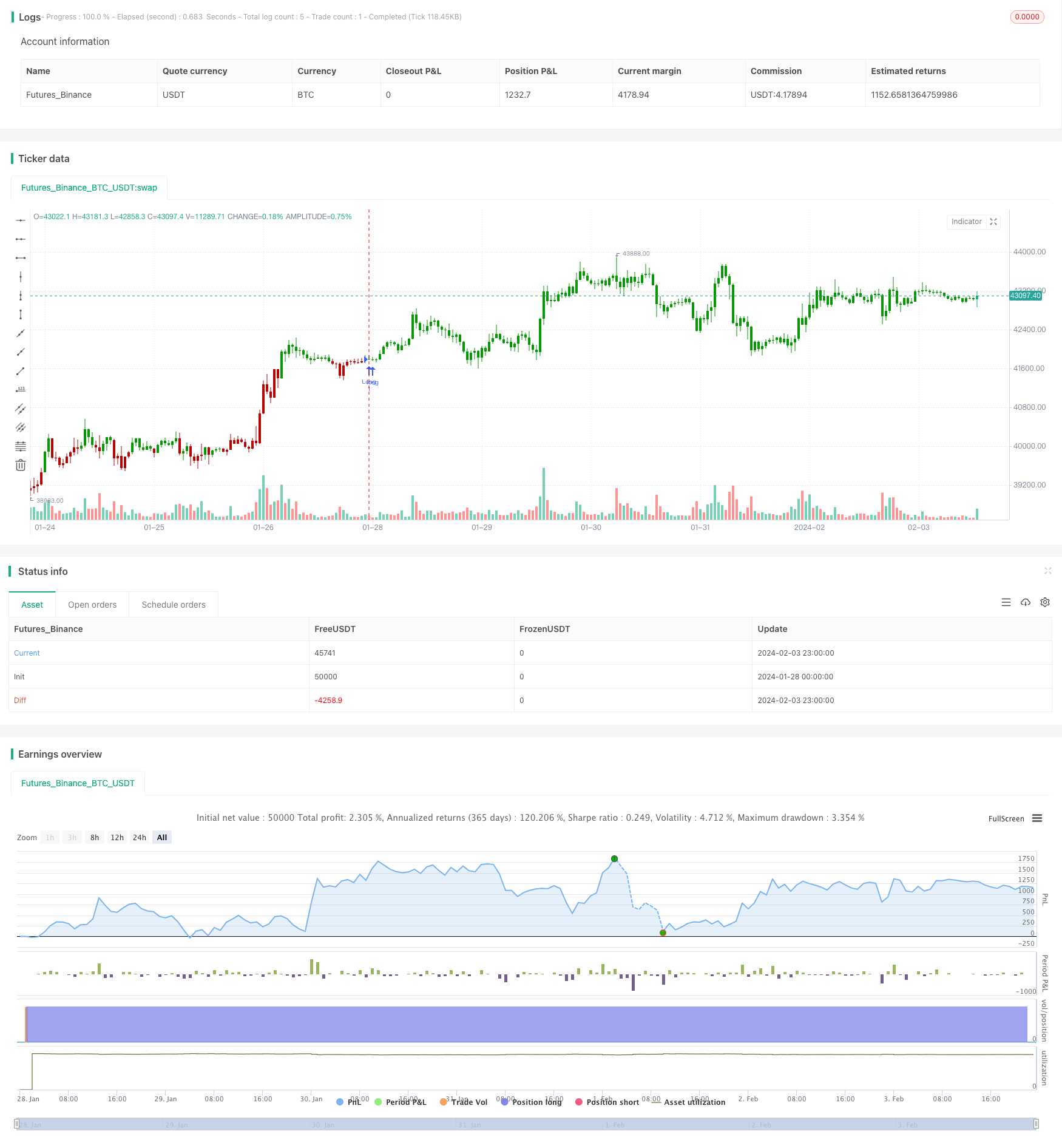
概述
该策略首先根据前一交易日的最高价、最低价以及收盘价计算出卡马奇拉枢轴点。然后结合布林带指标对价格进行过滤,在价格突破枢轴点时产生交易信号。
策略原理
- 计算前一交易日的最高价、最低价、收盘价
- 根据公式计算出卡马奇拉枢轴线,包含上轨H4、H3、H2、H1和下轨L1、L2、L3、L4
- 计算20日布林带上轨和下轨
- 当价格上穿下轨时做多,下穿上轨时做空
- 止损点设在布林带上轨或下轨附近
优势分析
- 卡马奇拉枢轴线包含多个关键支撑阻力位,增强交易信号的可靠性
- 与布林带指标结合,可有效过滤假突破
- 多组参数组合,交易灵活
风险分析
- 布林带指标参数设置不当可能导致交易信号错误
- 卡马奇拉枢轴线关键位计算依赖前一交易日价格,可能受隔夜跳空影响
- 多头空头操作都有亏损风险
优化方向
- 优化布林带参数,寻找最佳参数组合
- 结合其它指标过滤假突破信号
- 增加止损策略,降低单笔亏损
总结
该策略综合运用卡马奇拉枢轴线和布林带指标,在价格突破关键支撑阻力位时产生交易信号。可通过参数优化和信号过滤来提高策略收益率和稳定性。总体来说,该策略交易思路清晰,可操作性强,值得实盘验证。
策略源码
/*backtest
start: 2024-01-28 00:00:00
end: 2024-02-04 00:00:00
period: 1h
basePeriod: 15m
exchanges: [{"eid":"Futures_Binance","currency":"BTC_USDT"}]
*/
//@version=4
////////////////////////////////////////////////////////////
// Copyright by HPotter v1.0 12/05/2020
// Camarilla pivot point formula is the refined form of existing classic pivot point formula.
// The Camarilla method was developed by Nick Stott who was a very successful bond trader.
// What makes it better is the use of Fibonacci numbers in calculation of levels.
//
// Camarilla equations are used to calculate intraday support and resistance levels using
// the previous days volatility spread. Camarilla equations take previous day’s high, low and
// close as input and generates 8 levels of intraday support and resistance based on pivot points.
// There are 4 levels above pivot point and 4 levels below pivot points. The most important levels
// are L3 L4 and H3 H4. H3 and L3 are the levels to go against the trend with stop loss around H4 or L4 .
// While L4 and H4 are considered as breakout levels when these levels are breached its time to
// trade with the trend.
//
// WARNING:
// - For purpose educate only
// - This script to change bars colors.
////////////////////////////////////////////////////////////
strategy(title="Camarilla Pivot Points V2 Backtest", shorttitle="CPP V2", overlay = true)
res = input(title="Resolution", type=input.resolution, defval="D")
width = input(1, minval=1)
SellFrom = input(title="Sell from ", defval="R1", options=["R1", "R2", "R3", "R4"])
BuyFrom = input(title="Buu from ", defval="S1", options=["S1", "S2", "S3", "S4"])
reverse = input(false, title="Trade reverse")
xHigh = security(syminfo.tickerid,res, high)
xLow = security(syminfo.tickerid,res, low)
xClose = security(syminfo.tickerid,res, close)
H4 = (0.55*(xHigh-xLow)) + xClose
H3 = (0.275*(xHigh-xLow)) + xClose
H2 = (0.183*(xHigh-xLow)) + xClose
H1 = (0.0916*(xHigh-xLow)) + xClose
L1 = xClose - (0.0916*(xHigh-xLow))
L2 = xClose - (0.183*(xHigh-xLow))
L3 = xClose - (0.275*(xHigh-xLow))
L4 = xClose - (0.55*(xHigh-xLow))
pos = 0
S = iff(BuyFrom == "S1", H1,
iff(BuyFrom == "S2", H2,
iff(BuyFrom == "S3", H3,
iff(BuyFrom == "S4", H4,0))))
B = iff(SellFrom == "R1", L1,
iff(SellFrom == "R2", L2,
iff(SellFrom == "R3", L3,
iff(SellFrom == "R4", L4,0))))
pos := iff(close > B, 1,
iff(close < S, -1, nz(pos[1], 0)))
possig = iff(reverse and pos == 1, -1,
iff(reverse and pos == -1 , 1, pos))
if (possig == 1)
strategy.entry("Long", strategy.long)
if (possig == -1)
strategy.entry("Short", strategy.short)
if (possig == 0)
strategy.close_all()
barcolor(possig == -1 ? #b50404: possig == 1 ? #079605 : #0536b3 )